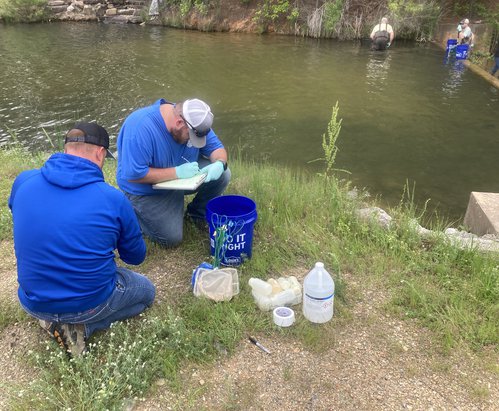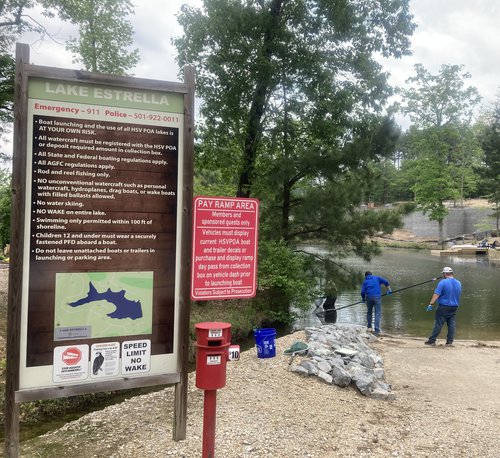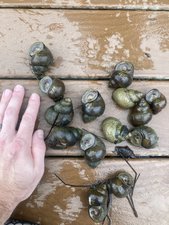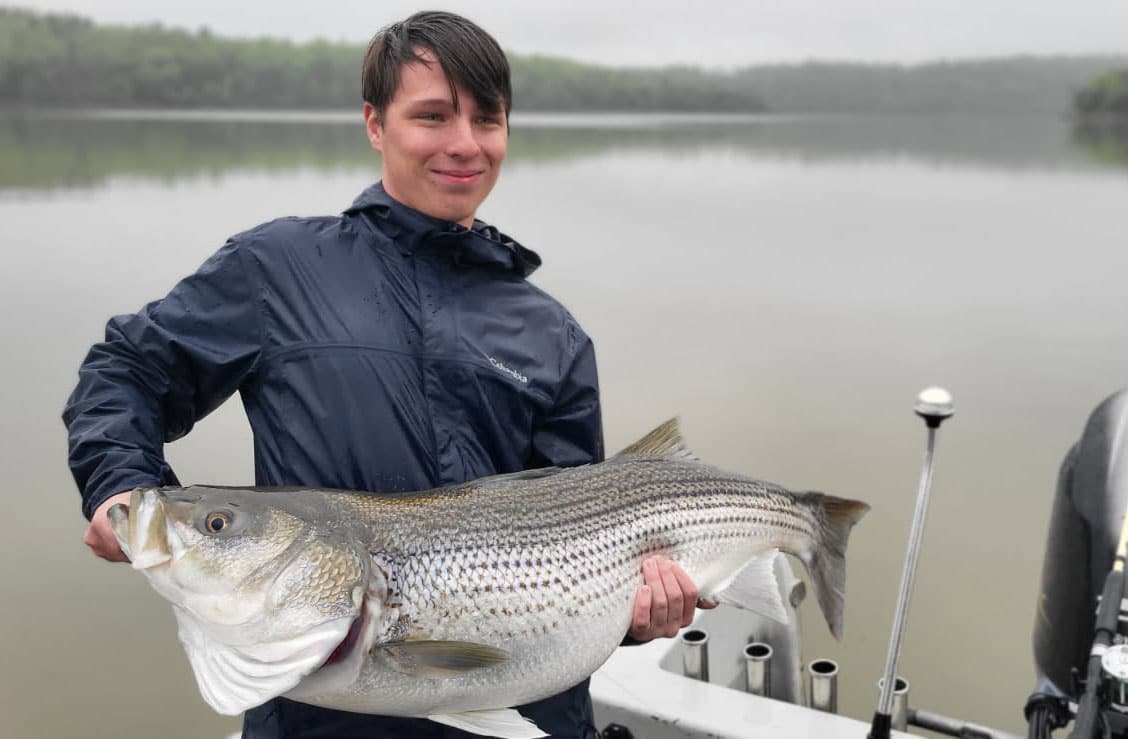Invasive snails found in Hot Springs Village lakes
ON 05-25-2022

May 25, 2022
Randy Zellers
Assistant Chief of Communications
HOT SPRINGS VILLAGE — The Arkansas Game and Fish Commission has confirmed the presence of an invasive species of snail in Lake Granada and Lake Estrella within Hot Springs Village after following up on a report of the species in April.
Mystery snails are native to Asia and are popular in the aquarium trade. There are three species of mystery snail, banded, Chinese and Japanese. The Chinese mystery snail is a prohibited species in Arkansas, meaning it is unlawful to import, transport, or possess in the state. While it is currently legal to possess banded and Japanese mystery snails in aquariums and other captive environments, releasing them or any other captive species into the wild is illegal and can lead to unintended consequences.
“An aquarium release is likely where this infestation began,” Matt Horton, AGFC aquatic nuisance species coordinator, said. “It may seem harmless to release a couple of aquarium pets into the wild, but without their native predators and environmental conditions to keep them in check, some species can quickly overtake new systems where they are introduced.”
In addition to competing with native species for food and other resources, they can carry parasites that can infect native fish and mussel species, as well as people.
“Right now we are still evaluating the situation,” Horton said. “We don’t know exactly what effects these snails will have on some of our native mussel species, some of which are endangered or threatened and live within the Saline River system, which is downstream of these lakes.”
Fisheries staff from the AGFC and Hot Springs Village worked together last week to collect live snails from lakes where they had been reported to investigate whether the snails are carrying any problematic diseases or parasites.
“We collected more than 260 snails from Lake Granada and Lake Estrella within a few hours for pathology testing,” Horton said. “A preliminary inspection of Lake Maria and Lake Sophia did not turn up any evidence of mystery snails, but that does not eliminate the possibility that they have spread to those lakes.”
Snails from about one-third inch to more than 2½ inches long were collected. According to Horton, this indicates that multiple year classes of the snails were present.
The snails were sent to the Auburn University Fish Disease Lab for analysis. Additional samples were preserved and will be sent to a separate laboratory to determine the exact species now present in Arkansas.
“We know they are either Chinese or Japanese mystery snails, however to reliably identify the species requires genetic testing, because physical characteristics are so similar.” Horton said. “We have preserved samples and are following up with a different laboratory to determine if we only have one of those species present or both.”
The AGFC and Hot Springs Village are working together to further survey the remaining eight lakes within the Village as well as the middle fork of the Saline River, where releases of these lakes flow.
“Unfortunately, there is not an effective control option available,” Horton said. “Drawdowns might be effective if extended over summer months, but the lakes do not have the infrastructure to draw down and the snails would likely be flushed into the Saline River. Molluscicides and other aquatic toxicants, such as rotenone, are not very effective at controlling these species in lakes this large and would impact non-target species.”
Horton says birds, crayfish and native fish, particularly blue catfish, channel catfish, redear sunfish and drum, will feed on mystery snails, but it is unknown if they would be effective in controlling them.
The long-term impacts of these snails is unknown, but this is a strong reminder that once a nonnative aquatic species becomes established in a lake or other body of water, it can be nearly impossible to eliminate. The best way to stop invasive species is to prevent their introduction.
Mystery snails, along with several other aquatic nuisance species found in our state, can be unintentionally transported to other water bodies by hitching a ride on boats, trailers and livewells. To help protect your favorite fishing place from these invaders, please remember to clean any vegetation or debris from your boat, motor and trailer, pull drain plugs and drain the water before leaving the boat ramp, and allow your boat to dry before moving to a new water body.
“If someone has an aquarium pet and it has grown to be too big for its tank or is no longer wanted, please remember it is illegal to release aquarium plants and animals into the wild,” Horton said. “We ask for pet owners to please consider alternatives such as rehoming. Sometimes pet stores will take back pets that they sold. Also, consider reaching out to a friend or family member, local school, science club or university to see if they could care for the animal. Aquatic plants should be double bagged and disposed of in the trash. Never release any aquarium pets or water into a storm drain.”
Learn which aquatic nuisance species are found in Arkansas, and report any possible sightings of these aquatic invaders at www.agfc.com/ans.
“We need people to report any aquatic nuisance species they see or catch, so we can document the distribution of existing species and rapidly respond to new introductions,” Horton said. “If you see a snail in the water larger than a quarter, it is not a native species and should be reported immediately along with a picture for identification.”
For more information on preventing the spread of invasive species, visit www.habitattitude.net or www.stopaquatichitchhikers.org.
Recent News

Arkansas Wildlife Weekly Fishing Report
Apr. 24, 2025

Contenders take aim as shooting sports regionals begin
Apr. 23, 2025
Subscribe to Our Weekly Newsletter E-mails
Don’t miss another issue. Sign up now to receive the AGFC Wildlife Weekly Newsletter in your mailbox every Wednesday afternoon (Waterfowl Reports are published weekly during waterfowl season and periodically outside the season). Fishing Reports arrive on Thursdays. Fill in the following fields and hit submit. Thanks, and welcome!
